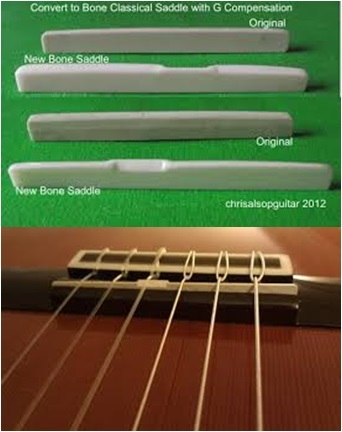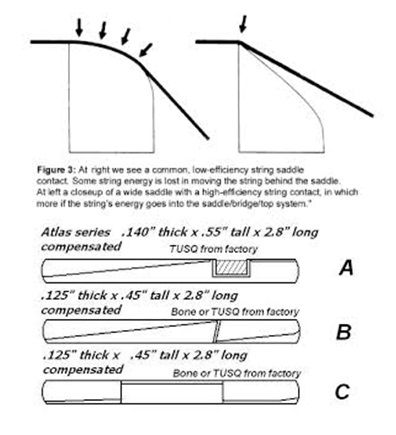|
rojarosguitar -> RE: question about saddel profile !! (Dec. 28 2014 16:40:27)
|
I'm not a luthier, but have some experience as to saddles.
The setback of the g string position is to compensate for the intonation problems of typical nylon g strings, especially for thicker and stiffer ones that tend to intonate too high at higher positions. Whether it is necessary depends on your guitar and strings you use. For fluorocarbon strings it is quite likely sn overcompensation.
Whether the saddle bone is arced sideways or not depends mostly on the issue whether your fretboard is radiused or not.
The edge profile should be so that there is a clear edge towards the fretboard, but not too sharp, otherwise string will break, especially the d string.
To make the portion behind the edge round is maybe nice but difficult. It should be taken care that the slope is less than the breaking angle of the string but so that the strings do not continue flat behind the edge because otherwise you'l get almost certainly some buzzes.
One of the most underestimated issues is the exact fit. The side standing on the top needs to be perfectly straight and perpendicular to the sides going up ( with the exception of slanted slots which are rather rare and need to be taken care by the luthier who knows the exact angle ). The bone should fit into the slot without any resistance or need to be pressed in, but also without any play, when you try to rock it back and forth. If it sits too tight it will ruin the trebles, especially the e-1 string. If it sits too loosly, it will add some nonharmonic overtones making the trebles unnicely harsh. It should slide into the slot easily and not fall out of the slot when you turn the guitar top down. Your saddle bone should never be fitted with strings on.
My 2 cents.
|
|
|
|


